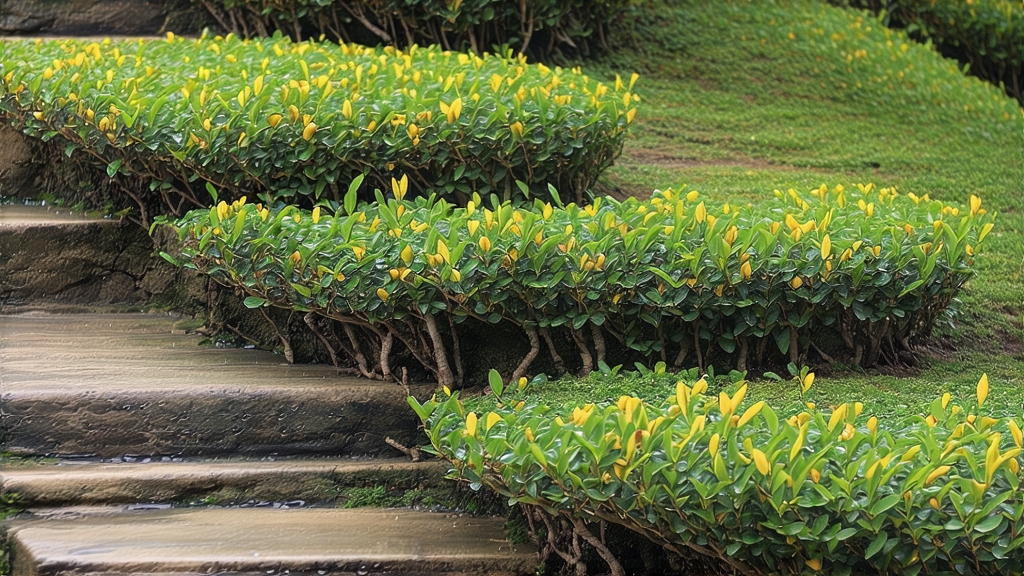
Tucked away in the cloud-veiled folds of Sichuan’s Mengding Mountain, 1,450 m above the Chengdu plain, grows one of China’s most discreet aristocrats of taste—Mengding Huangya, literally “Yellow Bud from Mengding.” While green teas steal the limelight and pu-erhs court collectors, this yellow-gold gem has spent centuries in quiet dignity, served only to monks, emperors and, more recently, to the handful of tea hunters willing to follow the narrow stone paths that zig-zag up the misty cliffs. To understand Mengding Huangya is to step into a story that begins in the Tang dynasty (618-907 CE), when the mountain was declared the “Primordial Abode of Tea Culture” and its first tender buds were pressed into cakes, wrapped in silk and dispatched along the Tea-Horse Road to Tibet in exchange for warhorses. By the Song era the cakes had given way to loose leaf, and by Ming times the leaf had turned yellow—an accident of delayed firing that monks noticed lent the tea a sweeter, rounder soul. Imperial tribute records from 1541 list “Mengding Yellow” among the 42 items the emperor alone was entitled to receive, ranking it above silver and jade. Today the tea remains a protected origin product, limited to 667 hectares of state-demarcated gardens and hand-crafted by fewer than 240 certified artisans.
Mengding Huangya belongs to the micro-category of Chinese yellow tea, a class defined not by leaf color but by the “sealed yellowing” (men huang) process—a slow, humid rest that nudges the leaf’s chlorophyll toward a muted olive-gold while coaxing out amino sugars that read on the tongue as warm corn milk, fresh bamboo shoot and mountain orchid. Within its own pedigree, Mengding Huangya is the bud-only expression, plucked at the “sparrow’s tongue” stage when the tip is still closed, no larger than a fingernail and sheathed in down that catches light like frost. A single kilo demands 72,000 such buds, all gathered between the 20-day window that opens when soil temperature steadies at 12 °C and closes before Qingming festival rains swell the cells and dilute their perfume.
Plucking begins at 5:30 a.m., while mountain fog is still thick enough to obscure the wicker baskets. Leaves must reach the workshop—stone huts built against the cliff—within 30 minutes, before sunrise warmth activates oxidative enzymes. The first craft step is “killing green” in a shallow wok set to 160 °C, but the toss is gentler than for green tea: fingers flutter like playing a guzheng, barely bruising the cuticle so that micro-fractures allow later humidity to penetrate without full oxidation. After 3–4 minutes the leaf is transferred to a horse-hair sieve and rolled under palm pressure for 60 seconds—just enough to bend the spine and release a sigh of sap. What follows is the hallmark of yellowing: the still-warm leaf is piled 5 cm deep inside square cedar boxes, covered with steamed cloth and left in a 28 °C, 75 % RH room for 48–72 hours. During this sauna the leaf ferments in its own residual moisture, turning from jade to antique gold while developing 2-acetyl-pyrrole, the same aroma compound that gives roasted sesame its nutty comfort. When the master senses the precise moment—by burying his face in the pile and inhaling for what he calls “the scent of warm rice emerging”—the leaf is removed and given a final low-temperature bake over charcoal made from local birch. A slow 40-minute drying fixes the color at straw-yellow with ivory tips, reduces moisture to 5 % and adds a whisper of smoked cream. The entire cycle spans four days, each hour dictated by readings of barometric pressure taken from an ancestral mercury column that has hung in the workshop since 1896.
To brew Mengding Huangya Western-style, use 3 g of leaf in a 250 ml glass teapot, 80 °C water, and steep for 3 minutes; the liquor will glow like early morning Sichuan sunlight, delivering a body closer to white tea than to green—soft, almost weightless, yet layered. For gongfu presentation, choose a thin-walled 120 ml porcelain gaiwan; after a quick 5-second rinse to awaken the dormant aroma, infuse 4 g of leaf at